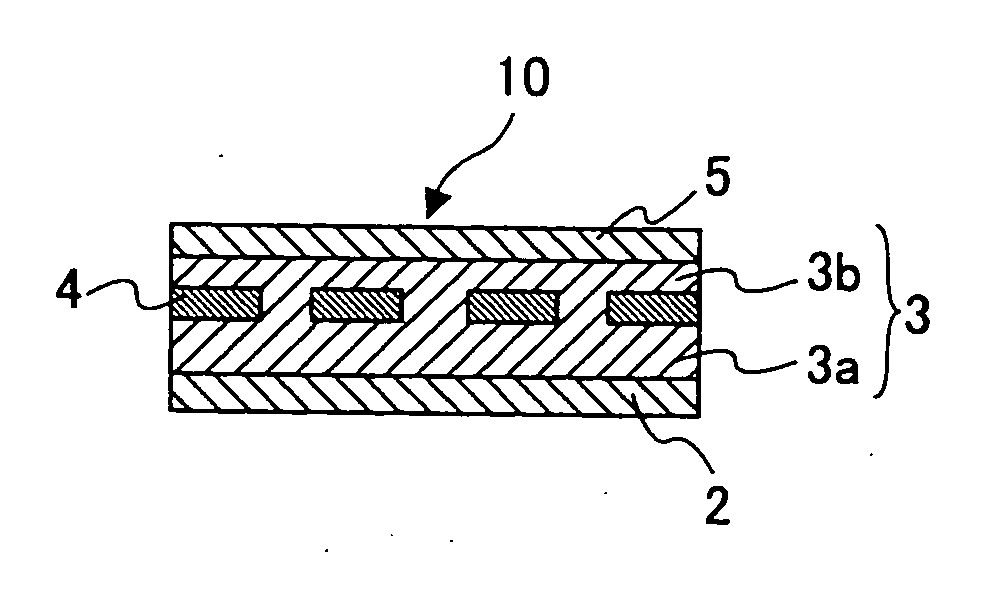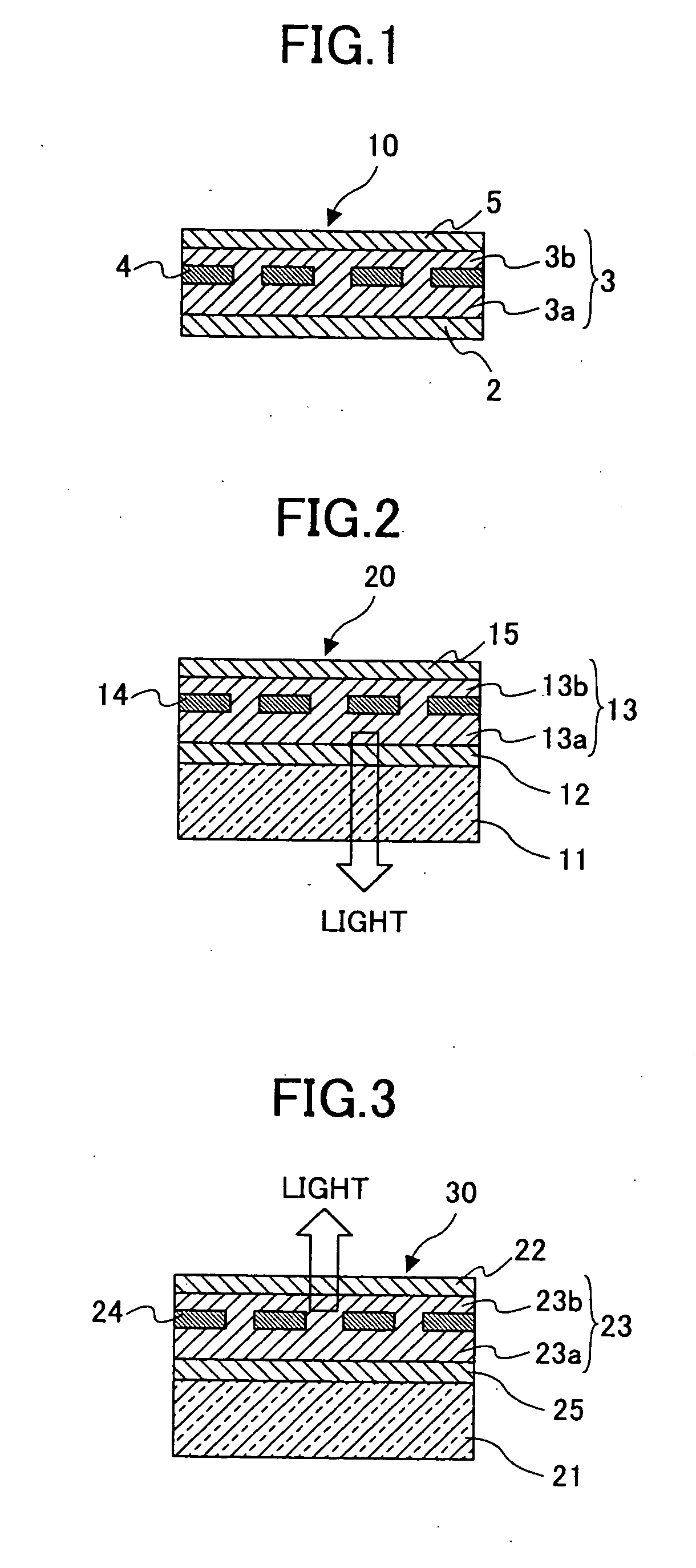Organic transistor
a transistor and organic technology, applied in the field of organic transistors, can solve the problems of weak pentacene adhesion to the substrate, low electric charge transfer speed of the tft proposed by j. drury et al., and the semiconductor material has seldom attracted attention for practical applications, etc., and achieves high power handling capability, high operating speed, and low cost.
- Summary
- Abstract
- Description
- Claims
- Application Information
AI Technical Summary
Benefits of technology
Problems solved by technology
Method used
Image
Examples
embodiment 1
[0063] (a) The drain electrode that is 1 micrometer thick was formed on the upper surface of a transparent glass substrate by sputtering a transparent electrode material consisting of ITO.
[0064] (b) A poly phenylenevinylene (PPV) solution, having viscosity of 20 CP, was prepared by dissolving PPV in a solvent consisting of xylene or chloroform, and the PPV solution was applied to the upper surface of the drain electrode by spin coating at a rotation speed of 500 rpm, such that a thin film that is about 1000 A thick was formed, which serves as a part of the (p-type) organic semiconductor layer.
[0065] (c) On the upper surface of this organic semiconductor layer, an aluminum thin film was formed by vacuum evaporation of aluminum, and comb-like gate electrodes were formed, using a metal mask formed in the comb shape.
[0066] (d) To the upper surface of the organic semiconductor layer and the comb-like gate electrodes, a spin coating of the PPV solution prepared in (b) above was perform...
embodiment 2
[0068] (a) The source electrode that is 1 micrometer thick was formed on the upper surface of a glass substrate by vacuum evaporation of an electrode material consisting of aluminum.
[0069] (b) A poly phenylenevinylene (PPV) solution, having viscosity of 20 CP, was prepared by dissolving PPV in a solvent consisting of xylene or chloroform, and the PPV solution was applied to the upper surface of the source electrode by spin coating at a rotation speed of 500 rpm, such that a thin film that is about 1000 A thick was formed, which serves as a part of the (p-type) organic semiconductor layer.
[0070] (c) On the upper surface of this organic semiconductor layer, an aluminum thin film was formed by vacuum evaporation of aluminum, and the comb-like gate electrodes were formed, using a metal mask formed in the comb shape.
[0071] (d) To the upper surface of the organic semiconductor layer and the comb-like gate electrodes, a spin coating of the PPV solution prepared in (b) above was performe...
embodiment 3
[0073] (a) The drain electrode that is 1 micrometer thick was formed on the back surface of a Si substrate that was highly doped with boron (B) or phosphor (P), having a low resistance characteristic, by vacuum evaporation of an electrode material consisting of aluminum.
[0074] (b) A poly phenylenevinylene (PPV) solution, having viscosity of 20 CP, was prepared by dissolving PPV in a solvent consisting of xylene or chloroform, and the PPV solution was applied to the upper surface of the Si substrate by spin coating at a rotation speed of 500 rpm, such that a thin film that is about 1000 A thick was formed, which serves as a part of the (n-type) organic semiconductor layer.
[0075] (c) On the upper surface of this organic semiconductor layer, an aluminum thin film was formed by vacuum evaporation of aluminum, and the comb-like gate electrodes were formed, using a metal mask formed in the comb shape.
[0076] (d) To the upper surface of the organic semiconductor layer and the comb-like g...
PUM
| Property | Measurement | Unit |
|---|---|---|
| thickness | aaaaa | aaaaa |
| thickness | aaaaa | aaaaa |
| thickness | aaaaa | aaaaa |
Abstract
Description
Claims
Application Information
 Login to View More
Login to View More - R&D
- Intellectual Property
- Life Sciences
- Materials
- Tech Scout
- Unparalleled Data Quality
- Higher Quality Content
- 60% Fewer Hallucinations
Browse by: Latest US Patents, China's latest patents, Technical Efficacy Thesaurus, Application Domain, Technology Topic, Popular Technical Reports.
© 2025 PatSnap. All rights reserved.Legal|Privacy policy|Modern Slavery Act Transparency Statement|Sitemap|About US| Contact US: help@patsnap.com



